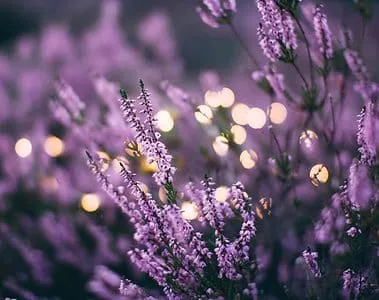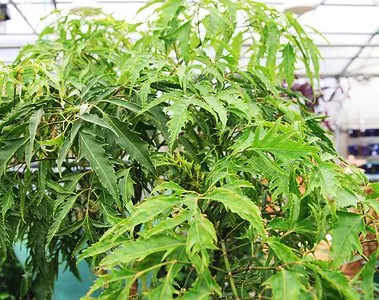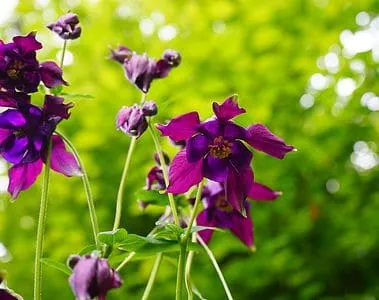No products in the cart.
Table of Contents
Have you ever encountered those small succulent plants scattered on the soil like real pebbles? Those are called lithops or living stones. Such a name is drawn upon its general appearance where it resembles the shape and color of small stones.
In fact, when you see it in the dry and arid regions of South Africa where it originates, you’ll barely recognize them as a plant.
These cute pebble plants barely grow more than an inch above the soil surface. It produces only a pair of fleshy leaves with a small gap line in between that they look like hoofprints. Lithops have no true stem and are slow-growing. In its natural habitat, you’ll mostly see them in clumps.
Learn more about this amazing rare plant by reading the information below:
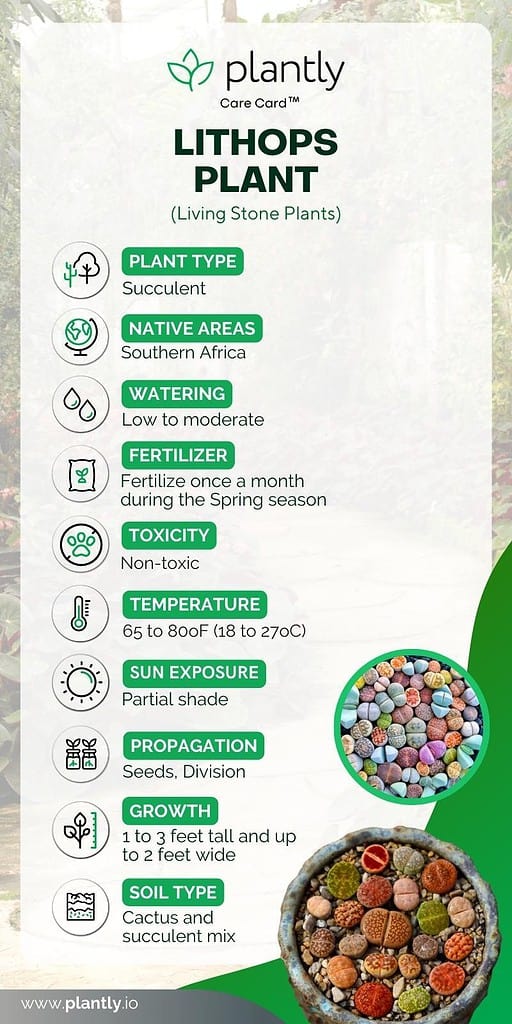
Lithops Plant Care Basics
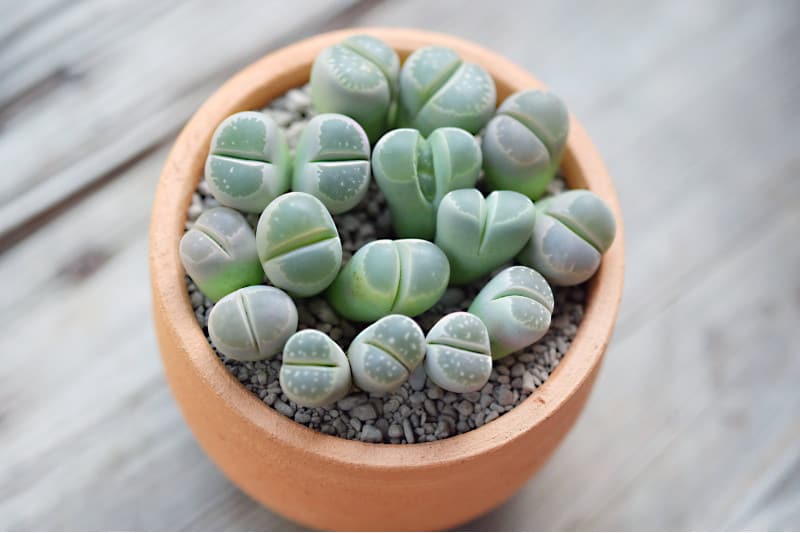
Growing lithops is not much of a demanding task. These small plants are relatively easy to tend to even for beginners. So here are the important things you have to bear in mind in order to grow your own living stones at home.
Recommended Potting Mix
Any succulent or cactus mix will do for lithops succulents. When doing your own potting medium, remember to add enough pebbles, sand, or any gritty material to make it porous and well-draining. It’s important that the mix drains water fast because they are highly sensitive to extra moisture.
Roots can easily get rotten with standing water.
Make sure to also sterilize the potting mix before planting your lithops. This is to avoid the proliferation of diseases caused by soil-borne pathogens.
Lighting Requirement

Direct sunlight can be a little harsh on lithops. Thus, we recommend that you expose them to only four to five hours of direct sunlight per day. After that, you can place it under partial shade, especially during the heat of the afternoon sun. If you treat it as an indoor plant, you may place it in an east or south-facing window.
Such a location would give the optimal light needed by your living stone plant.
If your lithops plants are becoming leggy, that’s an indication that your plant isn’t receiving enough sunlight. So, find a suitable location that is well-lit.
Watering Needs
Watering lithops should be taken with great consideration and care. To ensure that your lithops grow healthily, keep them away from too much moisture. Normally, you’ll only need to water lithops once every two weeks.
That watering schedule should suffice to supply the plant’s needs. Anyway, lithops have their own fleshy leaves to store enough water for themselves, so, they won’t really get thirsty.
Temperature & Humidity
In their native habitat, lithops plants are used to dry and warm environments. The ideal temperature ranges between 65 to 80oF (18 to 27oC). However, these living stones could also tolerate up to 90 to 100oF (32 to 38oC).
During winter, when the temperature gets cold, the older leaves of your lithops will start to die. Don’t panic because it is the normal course of affairs.

Remember to keep your pebble plants dry as much as possible. Extremely humid areas may cause the rotting of these lithops plants. Avoid placing it in moist places like the kitchen or bathroom.
Necessary Fertilizer
Lithops plants wouldn’t need frequent fertilization. Like most succulents, this plant can thrive in nutrient-deficient soils. However, if you wish to encourage flowering, you may feed it with a heavily diluted cactus fertilizer. Do this early in spring when you start watering again.
Avoid pouring the fertilizer directly on the leaf surfaces. Excess fertilizer may cause damage to your living stones. Make sure to add fertilizer with great caution.
Propagation
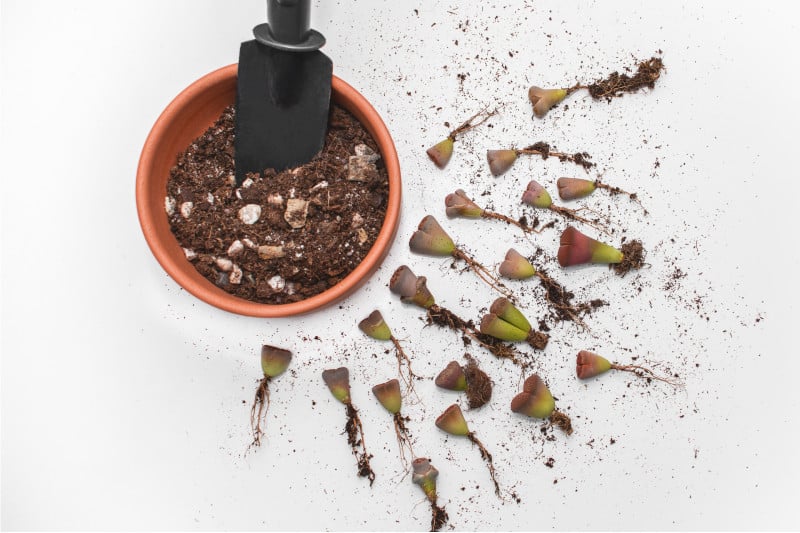
You can use liths seeds to multiply your parent plant. All you have to do is sprinkle the seeds on the soil’s surface. Cover it with thin soil and keep it lightly moist to encourage germination.
You can thin out excess living stones and transfer them to another container. The remaining young plants can be grown in the same pot.
Another way to propagate is to divide the existing clumps of living stones that have overgrown the pot. Once divided, you may plant the lithops plants in another container until it grows independently.
Growth Zone

The living stone plant will grow well in areas under USDA Zones 10 to 11. It is well suited as an outdoor plant when mild summer occurs.
Potting and Pruning
Unlike other plants, these living stones lithops wouldn’t need frequent repotting or pruning. Remember that these succulents are quite small and they grow very slowly. It may take some time before they fill in a small pot.
On the other hand, lithops have leaf pairs that do not grow like normal foliage. So, there’s no need to trim them off. Even the old leaves will shrink on their own once the new leaves emerge.
Lithops Varieties and Similar Plants
More than a hundred varieties under 37 species of living stones are available for you to choose from. They come in various colors, shapes, markings, and textures of the body. Some are in color gray, brown, rust, green, and even pink. To give you a few options, here are the most common varieties you’ll most likely encounter in a garden center.
Leslie

Also known as Leslie’s living stone, this variety has thick leaves that are covered with dots on the surface. It also produces yellow flowers.
Marmorata

Lithops marmota has a color of grey-white or pale grey-green. The leaves are dark and translucent in appearance. If you can imagine a marble tile, that’s what marmota lithops look like.
Hookeri

Hookeri is larger than the two previously mentioned lithops plants. It ranges from medium to large, forming clumps of up to 10 or more heads. The surface of the leaves looks like an embossed brain. It can be found in rocky places of South Africa, particularly in the Cape province.
Helmutii
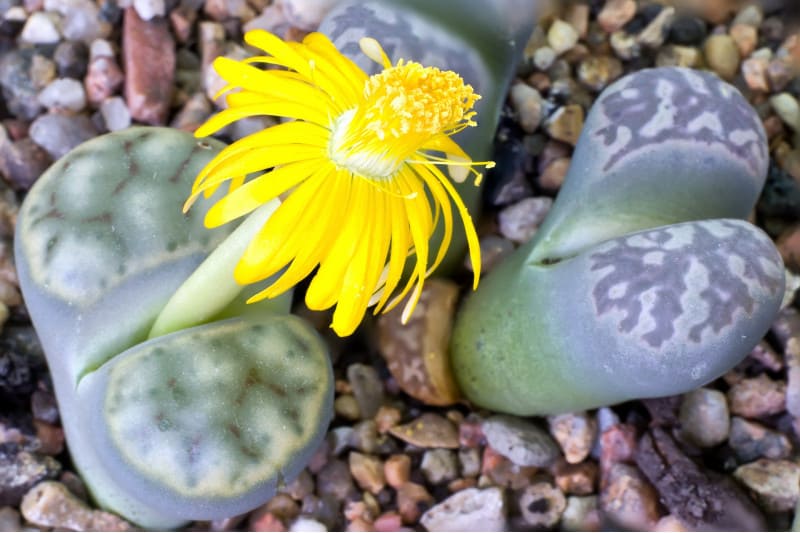
This species can be found in just a small area of South Africa, particularly in Steinkopf-Arrabies; Steinkopf-Kinderlê, and Namaqualand Republic. Helmutii is a green lithops that has transparent, windowed leaf pair. Interestingly, such appearance serves as an advantage as it gives them the ability to camouflage.
Terricolor

Terricolor is otherwise known as Lithops localis. This species has prominent small dots on its surface that ranges in color from dark grey through brown to purple.
Lithops Plant Diseases & Pests
Spider mites, thrips, scale insects, mealybugs, aphids, snails, slugs, and root-knot nematodes are the common pests and diseases that may potentially harm your lithop living stone. You can get rid of the pests by simply spraying them off with water. Others use diluted dishwashing soap to kill them.
Make sure to keep your lithops dry in order to prevent the invasion of pathogens that normally grow when the environment is moist.
Frequently Asked Questions
It’s important to note that lithops begin growing during fall all throughout winter and spring. That is why you’ll notice that the older leaves will start dying in early winter. When spring comes, the dead leaves will shrink behind revealing the young leaves that have grown.
From late spring to early summer, living stones will go dormant. This is their period of rest so there’s very little to no growth at all.
When given excellent care, living stones can remain alive in the same pot for about 10 to 20 years. Amazingly, these tiny succulents are long-lived. Just make sure to avoid overwatering, provide enough sunlight, replace potting medium from time to time, and keep it mostly dry.
Old lithops will eventually shed their aged leaves. This is an indication that your lithops is producing another generation of pups.
We recommend potting soil of gravel, perlite, coarse sand, lava rock, and pumice. You can make it up with one part soil or use an organic material with five minerals parts. Growing Lithops is quickly done in a soilless medium as well.
Almost the entire plant looks like stones, and they do not take up much room. The Lithops is long lived up to 50 years. You can keep these plants in the same container for up to 20 years.
Lithops seeds look like dust, and sowing them requires nimble fingers. Or you will need to mix it with silver sand to handle it.
Whether you want to buy, sell or simply reach out to other plant enthusiasts, Plantly is the right place to be!
